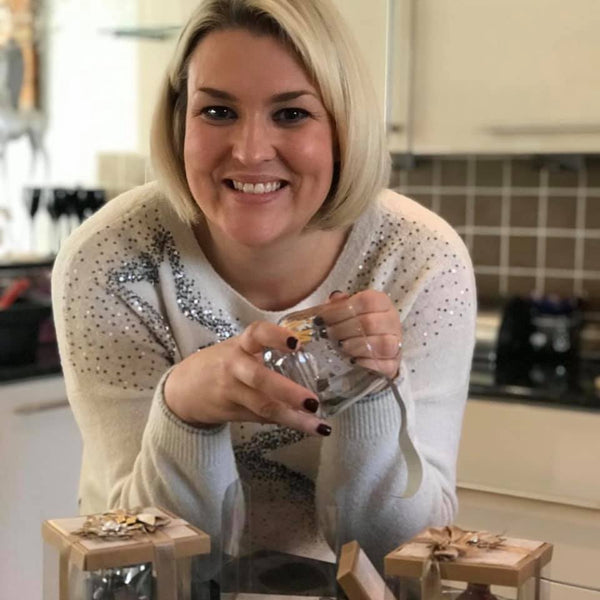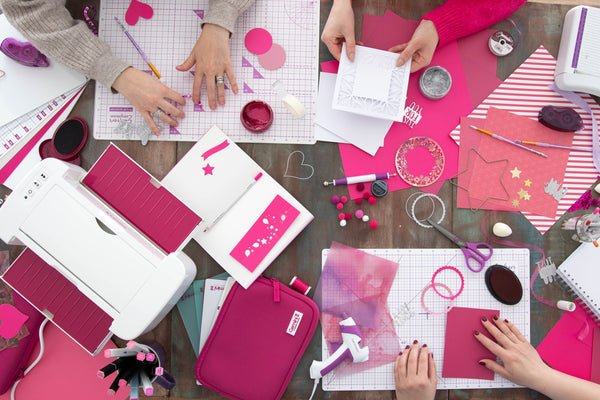Fancy footwork for your sewing machine!
- Read time: 5 minutes
- Written by: admin
Sewing machine feet or presser feet put pressure on fabric as it is fed under the needle of your sewing machine. There are many feet available that do many different jobs, and having the right foot for the job will make your projects look finished and professional, and make your sewing life a lot easier!
The feet will differ in look slightly depending on the manufacturer of your machine, but will work in the same way.
Over Edge Foot:
Also called overcasting foot, this foot has a little blade-like piece of metal that protrudes slightly from underneath. Run this along the edge of woven fabric, using the over edge stitch on your sewing machine, and the frayed edges will tuck inside the stitch as it wraps around the edge of the fabric. A useful stitch to help prolong the life of your project as it helps to stop fraying, and a stitch that gives a shop-bought look to your seams, a finishing touch that I would certainly use if I was to sell anything I’d made.
Use an over edge stitch to finish the seams if you’re dressmaking, or if you’re using a fabric like ticking that can tend to fray more than usual.
Free Motion Foot:
Sometimes called a darning foot, yours may be plastic or metal, and is a multi-purpose foot. Used for free motion embroidery, where the feed dogs are dropped on your machine, or a plate covers them, to enable you to move the fabric in any direction to create designs in thread. Quilters will sometimes use this foot to stipple or embroider over their quilts, and it can also be used for good old fashioned darning, or mending holes in fabric.
You’ll need to remove the ‘ankle’, the part that holds the presser foot onto the machine, and attach the embroidery foot which will usually have its own shank. When you start to sew, the foot ‘hops’ across your fabric as you move your work by hand in any direction you like!
Walking Foot:
This foot is invaluable if you’re sewing through several layers of fabric, for instance quilting, or for larger projects such as curtain making, particularly when the two weights of fabric are different. As the feed dogs underneath the needle feed the fabric from the bottom, the walking foot feeds it from the top, so all layers are fed under the needle evenly.
The walking foot is attached directly to the take up lever, with the claw-like part of the foot either around, or on top of the screw that holds the needle in place. The motion of the needle bobbing up and down moves the little teeth on the foot, which help to pull the fabric through.
You may find the foot a little noisy, this is fine, and you can use it with both straight and decorative stitches.
Zipper Foot:
Most sewing machiens will come with a zipper foot, and of course, as the name suggests, they are designed to sew in zips. They can be attached so that the needle can travel either side of the foot, and the stitches are taken close to the teeth of the zip as the side of the foot is open.
However, the zipper foot is also perfect for making piping, wrapping a strip of fabric around a length of cord and sewing close to the cord, then in turn sewing this to the edge of maybe a cushion cover or roman blind to add a professional finishing touch.
I can’t think of any other way you could create a perfect hem which is so narrow! The fabric is threaded through the coil-like tube in the centre of the foot, where it is folded over twice as you straight stitch the hem. Have a practice on scrap if you’ve not used this foot before, you’ll find the finished hem looks neater if you trim away any fraying threads beforehand, and give the hem a head start by rolling firstly by hand and securing with a few stitches before feeding through the foot.
This is the foot to use if you’re hemming fine fabrics like silk or chiffon, where you want the hem to be as small and invisible as you can.
Non Stick Foot:
Leather, vinyl, oilcloth, suede and plastic can be difficult materials to sew with a regular sewing machine foot as friction makes them ‘stick’ to the foot. This non-stick or Teflon foot will address the problem, as with a good saucepan, nothing sticks!
Use the non-stick foot with straight or decorative stitches, most of these feet are the snap on type. A tip if your material is sticking to the throat of your machine is top place either a little tissue paper or tear-away stabiliser underneath the fabric to help it glide easily.
If you have a sewing machine foot that you’re baffled by, or need any other help with presser feet, get in touch!




















